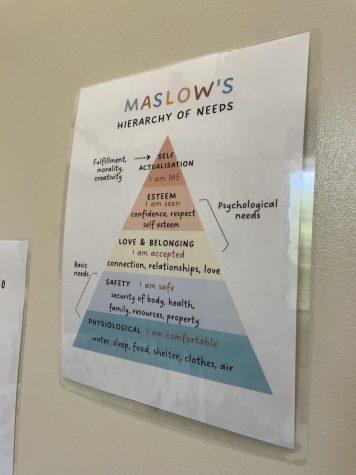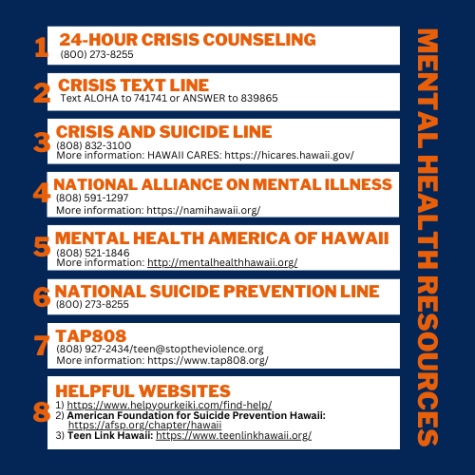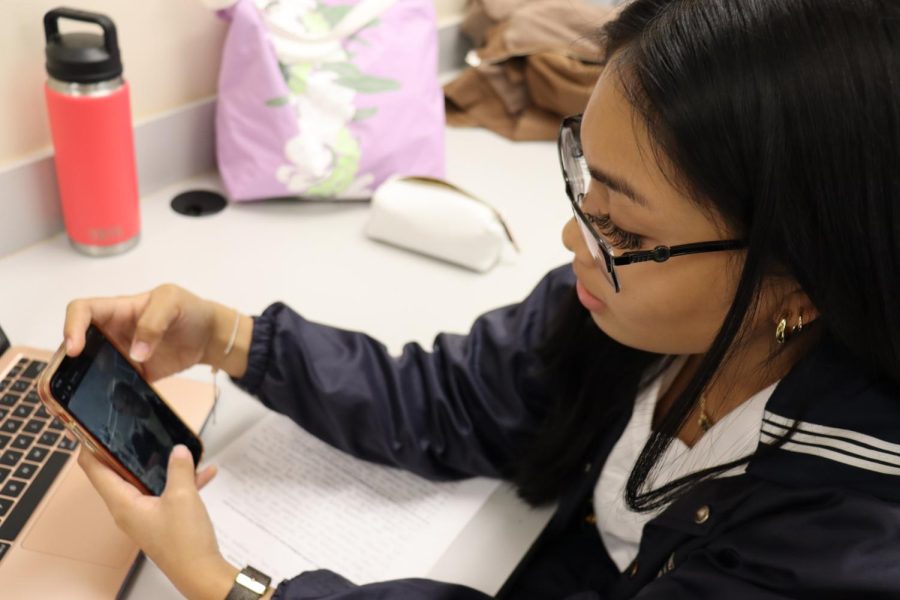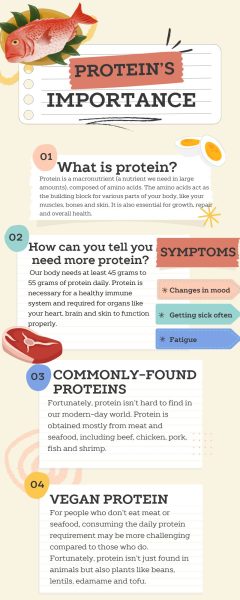More teens report feeling sad and hopeless
Academy senior Ember-Joy Guevarra watching a video on social media platform Snapchat. Guevarra has a mixed opinion on social media, which she says can be both a great way to feel connected but at the same time, creates feelings of insecurity. Photo by Abigail Walker.
A terrifying new reality has set in among teens all over the world, as depression and suicide rates are at an all-time high. A 2021 study by the Center for Diseases Control and Prevention (CDC) found that 44% of high school students report “persistent feelings of sadness or hopelessness.” But with only 8,000 high schoolers surveyed nationwide, this is an underestimation. Many teens do not realize the condition of their emotions and thoughts, know where to find help or feel comfortable being honest about these feelings due to the stigma surrounding mental health. Therefore, it is important to focus on the risk factors contributing to this rising trend in order to find a way to better support our teenagers.
In an article written by “The Atlantic” writer Derek Thompson, four main forces propel these rising rates of depression and suicide. These main forces are social media use, lack of social interactions, stressful current events and the high expectations that parents, and even friends and other family members, have placed on students.
“It’s not just one of these factors,” he writes. “It’s all of them combined. One thing on its own might affect a student a little, but it’s all of these factors piling on top of one another that interact and amplify the effects.”
Social media
“I have very mixed opinions on social media,” said Sacred Hearts Academy senior Ember-Joy Guevarra. “For one, it makes me feel connected to my friends and family…But social media has also made me more insecure and cautious of what I post, most especially when I see the ‘ideal’ body of women being hyped up on TikTok or when I second guess what I’m about to post because I’m worried about what others will think of me after.”
While it is great to have this connectedness, especially after having to isolate during the COVID-19 pandemic, those connections often come with negativity. With many teens today having at least three to four social media accounts across different platforms, the connectivity can become toxic.
“This new digitalized age is a double-edged sword,” said Behavioral Health Counselor Marisa Lloyd. “We are a lot more connected than ever, and it’s easy to find people you can chat with to find support. However, along with all of that connectedness can come a lot of expectation and responsibility.”
That connectivity comes with tons of notifications and fears around cyberbullying, phishing and internet security, which can quickly become overwhelming. Students do not know the weight that some of their decisions can have when regarding social media, which may lead to consequences we are not prepared to handle.
Lack of social interactions
Having support systems and people you can trust and rely on are such an important part of taking good care of yourself. However, those relationships took a huge hit for many people over the pandemic. With students converting to online learning, it was very easy for students to develop a sense of isolation.
In an article written by Heather Stringer for the American Psychological Association (APA), we are introduced to Patricia Perez, who recounts her own experience with her 16-year-old son. “Before the pandemic, he was passionate about math and science and participated in his school’s robotics and Model United Nations clubs, but his mood started changing after states began closing schools in the spring. As he logged on to his computer for Zoom school week after week, he started sleeping more during the day and became more isolated from friends and family members.”
I can relate. At the peak of the pandemic, I had to decide if I would spend time with my friends or keep myself and my family safe from COVID-19. Making the choice to stay at home and not take the risk was an important decision; however, that choice then caused me to lose touch with many of my friends. I slept a lot more throughout the day, barely ate anything and often felt like the walls of my room were closing in around me. It was a very suffocating time that I think has really affected my own mental health.
The negative effects of social isolation are not new. According to an article in the “Journal of Health Social Behavior,” the authors state that “social relationships have significant effects on health…through behavioral, psychological, and physiological pathways.” Their research also analyzed how captors used methods of social isolation on prisoners of war as a form of torture, resulting in physiological and psychological disintegration, possibly even death.
If the only interaction students were having was through a screen that barely allowed for any kind of engagement and instead promoted an unhealthy amount of disassociation, there is no surprise that a true lack of any other kinds of social interactions would have built up and left behind an ugly scar for us all.
Stressful current events
In our lives, stress can stem from events happening from our global community to our local society. These include issues like an increase in localized crime, rising rates of inflation or even changes within our government. We have access to more information than ever before, and that exposes students to challenges that would not have been so easily readable and accessible as they are now.
“Hearing about some of these events like the increase in localized crime…made me very scared,” Guevarra said. “Questions popped up like, can I trust local authorities and people in my life to actually care enough, or even be equipped enough to protect me?”
Other students discussed worries for their family. Would they be able to support them and keep them safe, with the current state of the world?
This is not a reality just limited to these students or even just students in Hawaii. A 2018 study by the APA mentioned that, “Money and work consistently top the list of stressors for adults overall, and both are common stressors for Gen Z as well. More than eight in 10 (81 percent) of Gen Zs between the ages of 18 and 21 report money as a source of significant stress, with as many as (77 percent) saying the same about work.” About 75 percent of Gen Z’s also reported various health-related concerns being a huge source of stress and 46 percent reporting the state of the economy at the time as well. Stress around safety after the amount of mass and school shootings in America was also another concern, with 75 percent being worried for mass shootings and 72 for school.
If these were the statistics in 2018, we can only wonder how much worse they must have gotten after the recent, crazy world events like the COVID-19 pandemic and the rise in crime all around the world.
High expectations
The APA released an article noting “rising parental expectations and criticism are linked to an increase in perfectionism among college students, which can have damaging mental health consequences.” Analyzing data from more than 20,000 American, Canadian and British college students, co-author Andrew Hill stated, “The pressure to conform to perfect ideals has never been greater and could be the basis for an impending public health issue.”
A high school student who wished to remain anonymous agreed, stating, “There is definitely a lot of added stress in my life due to not wanting to let my teachers or parents down (academically)…This stress comes from worrying about my grades and staying up late every night to complete my assignments and study for upcoming tests and quizzes.”
The anonymous student also mentioned that staying up late has contributed to extreme sleep deprivation. For him, the build-up has become so overwhelming that he can do nothing but cry to get any relief. It is a situation that is, unfortunately, not unique to just him.
Saint Louis School senior Kekaimalu Aiona mentioned how the added stress from those expectations has led to him losing motivation, feeling lazy and losing confidence in himself altogether.
Guevarra added to that, saying, “I wouldn’t say that this is bad stress because it really is for the betterment of me.”
What we can sometimes overlook is that parents may view this attitude as healthy motivation in itself. Thinking that if I show my disappointment enough and dish out punishments, my child will try harder and get better grades. However, that is not true. Most of the time, this will instead lead to lack of motivation and self confidence, which is very detrimental to the mental stability of a student. If a student experiences this and labels it as normal, then that student will continue to push themselves, saying that they’re not good enough yet, and eventually fall into a state of burnout, or as we, seniors, like to call it, senioritis.
Instead, parents should encourage their children to always do their best by reminding them that it is OK to fail and not get the best score of all time because at that point, that student tried their best. Their best may not have been the same as someone else who got a higher grade or score, but that does not mean that their effort and what they got out of it should be considered any less.
“One thing I like to talk to students about is how expectations can sometimes be premeditated resentment,” said Academy counselor Ashley Luke. “All of these expectations from our parents, from our teachers, from our counselors, from our friends and those presuppositions can create a ton of pressure that we don’t always know how to maintain…Instead of expectations, we should have hopes or desires, so that you know that someone still holds you to high standards.”
With all of these factors happening at the same time, it is not hard to imagine the build-up of that stress really weighing down on the shoulders of students everywhere.
Common fallacies
Why is this current reality actually such a bad thing? According to the World Health Organization (WHO), “Globally, one in seven 10-19 years olds experience a mental disorder, which accounts for 13% of the global burden of disease in this age group.” It’s not just because teenagers are always moody or just naturally behave badly, it is because of the added stress that comes with all of these factors mixing together.
There are so many fallacies going around about what mental health really is and if it’s even a problem. Statements, like people with mental health issues are weak, are not true.
Mental health problems have nothing to do with being lazy or weak or moody. The stressors of our world and even biological factors can end up contributing to various mental problems, as mentioned by the U.S. Department of Health & Human Services.

That judgment can lead to students hiding themselves from the world around them and merely allowing all of their feelings and fears to pile on top of each other.
“There are a lot of people who are very good at hiding that pain and not speaking about it, and I believe there are so many high school students that feel that way,” Aiona said.
However, as Academy sophomore Gennellea Amasol mentioned, “I respond to different stressors in my life, especially stress caused by schoolwork, by slowly motivating myself to get work done…during school hours. Following that, I reward myself with time with my animals, time on my phone, time with friends and even just time to simply rest and let my imagination go wild.”
Learning how to healthily cope with stress and not allow it to rule your life is one of the most important things when it comes to battling for better mental health.
Finding support
How exactly can we help to support and slow down this current mental health epidemic? First, we must understand why it is important to provide support to our teenagers. As stated by WHO, “The consequences of failing to address adolescent mental health conditions extend to adulthood, impairing both physical and mental health and limiting opportunities to lead fulfilling lives as adults.” To put it simply, the effects of these mental health issues and the issues themselves will not just disappear overtime if we ignore it. Instead, it will get progressively worse.
A great way to combat this would be helping students to understand that their mental health and overall well-being matters more than any schoolwork or other stressors in their life. When asked about how she herself would implement this, Academy counselor Luke brought up a graphic she has hanging on her wall that mentions Maslow’s Hierarchy of Human Needs. It is composed of what he believed should always be at the forefront of everyone’s minds when it comes to their own needs.
Luke explained, “On the bottom of the pyramid, you have to have water, sleep, food, shelter, clothes, oxygen, etc. The very basics that one needs to survive. That comes first before anything else. You need to be OK as a person. From there, we move on to making sure that you feel safe where you are and that you have people around you that you can lean on. Next, is looking at relationships, love, a sense of connection, which is why no friend, boyfriend, comes before your very basic needs. Then move on to feeling respected, having high self-esteem, feeling confident. They build upon each other…knowing who you are as a person, and that’s self-actualization.”

In looking at that, Luke says that when it comes to managing your mental health, you have to take care of all of the little things and build up from there just like the pyramid. A strategy that I think would definitely be important for students to learn about. Many of us overlook some of our most basic needs in favor of getting more homework done or trying to plan thing after thing, whatever that might be. In turn, we lose ourselves in that process of not wanting to let anyone down.
In understanding that, it would be good to find ways to help reduce some of the stressors in students’ everyday lives. When asking behavioral specialist Lloyd how she would do it, she presented a wonderful solution that would also teach students some valuable life lessons. Lloyd explained, “If I could implement something, I would say no homework. Whatever gets done in school, gets done in school.”
As a struggling student myself, trying to balance school and my own personal life, I definitely perked up at this idea. However, before anyone starts getting in a tizzy, it’s not just completely eliminating homework. Homework can still be there, but it is utilizing a process where you allow students to complete their homework during school hours.
This teaches students to utilize their time wisely. If a student does not utilize that time wisely, then they will end up still having work to complete at home. This leaves open the opportunity for that student to realize the benefits of finishing work in school.
When a student can go home and completely disconnect from the stress of school, they can switch from a school mindset to a more relaxed, stress-free one when coming home. This would allow students to value free time and push themselves to work harder, which would help them to recognize the need for a good work and personal life balance. Something that, unfortunately, not many adults know how to do.
If we could help students to do so, we would be one step closer to helping students be equipped to work through any stressors and mental health conditions they have currently. In that way, it will not impair them in the future.


Abigail is a first-year journalism student in her senior year. During this year, she hopes to learn more about the role of a journalist and become the...





























Mahina Monsarrat-Ohelo • Nov 15, 2022 at 2:09 pm
This was a great article!
Ava Damo • Nov 15, 2022 at 2:03 pm
I can relate to hat 44% of high schoolers feeling sad and hopeless.
Kaelin Apuakehau • Nov 15, 2022 at 1:54 pm
I thought this article was very informational and relatable. I got to have a deeper insight into why teens feel more depressed these days.
Gennellea Amasol • Nov 15, 2022 at 1:51 pm
I love how informative this article was about mental health. It is super important to learn how to care about yourself and your mentality to power through your life like a piece of cake!